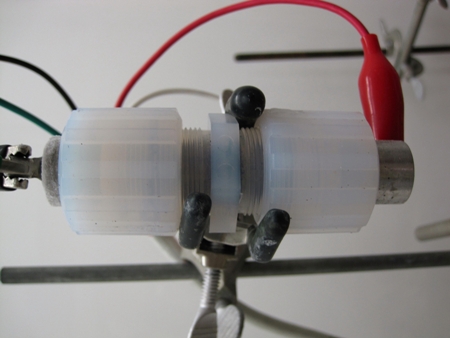Michigan Technological University researchers are working to develop a cheaper, lighter, greener and long-lasting battery. They are using an asymmetric capacitor, an electrical storage device, which is half battery and half capacitor for their research.
 Incorporating carbon foam makes the asymmetric capacitor in this cell lighter, greener and cheaper.
Incorporating carbon foam makes the asymmetric capacitor in this cell lighter, greener and cheaper.
Electrical energy is chemically stored in batteries store and the same is gradually released at a constant voltage over a longer duration. They can store higher energy amounts when compared to a capacitor; however, they are overweight and take long time to get charged. However, electrical energy is physically stored in capacitors. They are lightweight and they can be rapidly recharged and discharged indefinitely. Capacitors can only use half of their stored electrical charge.
An asymmetric capacitor is a combination of a capacitors and a battery. On the side of the capacitor, energy is stored through electrolyte ions that are attracted physically to a carbon anode’s charged surface. This design, blended with a battery-style cathode, can deliver approximately double the energy of a regular capacitor.
Michigan Tech researchers have now included an innovative element on the battery side to form a better asymmetric capacitor. Their cathode is nickel oxyhydroxide-based. Nickel oxyhydroxide is the same material utilized in rechargeable nickel-metal hydride or nickel-cadmium batteries. The Michigan Tech team used carbon foam a few years ago for its research. Bahne Cornilsen, a chemistry professor who had been examining nickel electrodes for several years, suggested that the nickel can be replaced with carbon foam.
Carbon foam has influence over nickel. Associate professor of chemical engineering Tony Rogers said that carbon foam can be used as a scaffold to stuff its holes with nickel oxyhydroxide. The carbon foam has 72% porosity. The researchers have recharged their innovative asymmetric capacitor for more than 127,000 cycles. Other asymmetric capacitors have the same numbers, but they don’t have the carbon-foam edge.